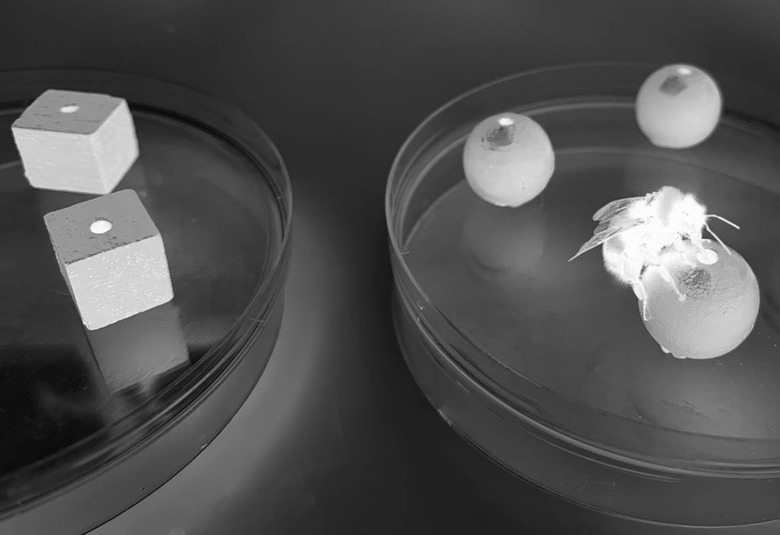Study Proves Bumblebees Can Find Objects In The Dark They've Only Seen Before
Humans have big brains and can store information in a way that allows the information to be retrieved by different senses. Scientists call this multi-sensory integration and it allows humans to form mental images of the world and is a key part of our conscious awareness. It turns out that some insects can recognize objects across different senses in their tiny brains. The research comes from Queen Mary University of London and Macquarie University in Sydney.Researchers have published work that shows bumblebees can find objects in the dark that they've only seen previously. In their experiment, bumblebees were prevented from touching an object when in light. They were trained to find rewarding sugar water in one type of object, which was cubes or spheres in this experiment, and a bitter quinine solution in the other shape.

When the scientists turned off the lights, the bees preferred the object that was previously rewarding and spent more time exploring it. The bumblebees were also able to solve the same task the other way around. When the bees learn to find a particular shape in the dark and were later tested in the light, they again preferred the shape they had learned was rewarding using their sense of touch.
Scientists say the ability is called cross-modal recognition. One scientist on the project says that the results of the team's study have shown that bumblebees don't process senses as separate channels, the senses come together as "some sort of unified representation." One scientist on the project said that it has been long known that bees can remember the shapes of flowers. The work indicates that something is going on inside the mind of bees that allows them to conjure up mental images of shapes.
The bee's ability to do this is "amazing" considering how small the bee's brain is. One scientist says that more investigation into the neural circuitry underlying the bee's ability to do this could one day help scientists learn how human brains imagine the world as we do. The research shows there's more going on in the brain of bees than we give them credit for.
